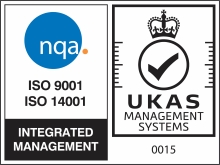An Electric Brave New World
As industry scales up to the mass production of electric vehicles (EV) a number of issues arise as new manufacturing methodologies are required.
The motor manufacturers have, since car production moved from a largely manual process to that of an automated one, evolved the way the production lines have operated.
Now that drivetrains and energy storage have fundamentally changed, the manufacture and assembly of these components is th enext big challenge on driving costs down and efficiencies and economies of scale up.
We, at Horizon, have extensive experience in delivering innovative solutions to these unique problems.
Complex Assembly of multiple parts
EV batteries are made up of battery modules, which in turn are made up from a case in which battery cells are inserted and then connected on busbars or wires.
Our client required a machine which could test assemble cells of type 21700 and 81650 into modules of various geometries, with up to 400 cells in a module. Each cell needed to be tested before being placed in a precise location within the module with the correct polarity orientations (positive up / negative down).





Details and tolerances
Cells were wrapped in a film layer with a slight overlap join. This meant the diameter of the round cell was slightly larger when measured across the join. If the cells were touching join to join across the width or length of the module then the cells would not fit in the allowed space. To counter this ‘we needed to detect the join and then rotate the cells to an angle so that the joins did not line up.





Expertise in automation
Our system allowed the operator to load cells into trays which circulated around the machine on a conveyor and through the machine on an indexing mechanism. A tray of cells entered the machine on a conveyor and then were shifted to a machine station, on the indexer. The test station used a single Hioki battery tester connected to a multiplexing test array to test each of the batteries one at a time using relays to select the connection.
Responsive and fully audited QA
Once tested the cells indexed to the Pickup station. A Planar Surface Gantry (H frame axis) was used for the X&Y axis as these minimise the mass being moved, and so allow for fast responsive performance. The cells were picked up using a vacuum cup, gripped, and orientated and rotated specifically for the location where it was to be deposited.
A record of each battery batch loaded, each cell's test results and its location within the module was transmitted at the end of the module assembly so that a full traceability for the module was achieved.
With this system we managed to provide a sub 1 second cycle time for each cell placed. For this we developed re-usable masks which fitted to the module to hold the framework ridged during cell placement. Cells were posted through the mask into the module locations.
